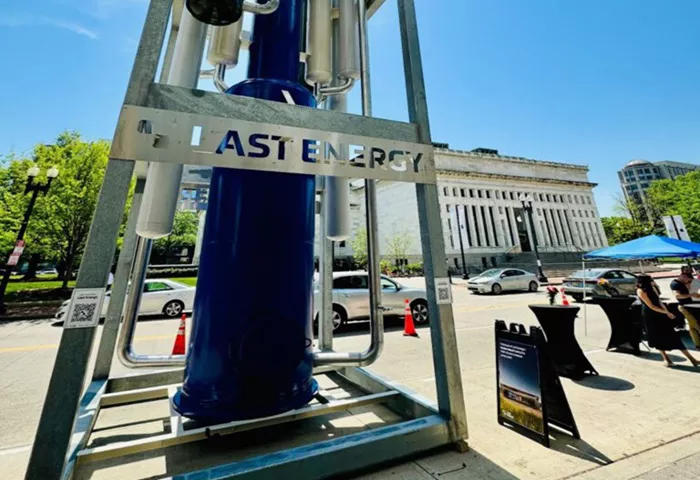Micro-modular nuclear plant developer Last Energy has announced plans to deploy four advanced pressurized water reactor (PWR) power plants at the site of the former Llynfi Power Station in South Wales. This initiative aims to transform the vacant location, which once hosted coal units from 1951 until 1977, into a hub for clean energy production.
According to the company’s statement on October 15, Last Energy seeks to deliver its first plant by 2027, pending necessary licensing and planning approvals. The project represents an estimated capital investment of £300 million ($393 million), which will be funded entirely through private investments without reliance on public funding. As part of its commitment to the local economy, Last Energy plans to source at least 10% of the project’s materials and services from local suppliers, potentially generating a £30 million economic impact in the region.
The project must undergo a thorough regulatory review to ensure compliance with safety, security, and environmental standards. Key assessments will be conducted by the UK Office for Nuclear Regulation (ONR), National Resources Wales (NRW), Planning and Environment Decisions Wales (PEDW), and the Environmental Agency (EA). Last Energy has been proactive in engaging with these regulatory bodies and local officials, and has initiated public outreach efforts.
This project represents a significant opportunity for Last Energy, which has secured 80 commercial agreements for its PWR-20 design since its establishment in 2020—an impressive increase from 34 agreements last year and 50 at the beginning of 2024. Originally a spin-out from the Energy Impact Center, a Washington D.C.-based research institute focused on climate solutions, Last Energy’s portfolio includes projects supported by power purchase agreements (PPAs) primarily targeting the European market, with many projects set for development in the UK.
The PWR-20 reactor features a continuous output of 20 MWe (80 MWth) and utilizes standard full-length PWR fuel enriched to 4.95%, along with closed-cycle air cooling. The modular design enables a “plug-and-play” deployment approach, allowing for assembly using relatively few components and minimal land requirements. The company claims that a PWR-20 plant can be fabricated, transported, and assembled within 24 months, with construction timelines ranging from six to 24 months.
Last Energy has already successfully built and tested multiple prototypes of its micro-modular design with various vendors, emphasizing its strategy to leverage standardized designs for rapid commercialization. The company aims to transform the traditional nuclear energy model by implementing an innovative “energy-as-a-service” approach. This model allows Last Energy to own and operate its plants directly on customer sites, avoiding the lengthy development timelines typically associated with electric transmission grid upgrades.
The company asserts that this framework promotes scalability and rapid deployment through multiple small-scale facilities that utilize repeatable processes and off-the-shelf components. By focusing on manufacturability rather than novel reactor designs, Last Energy positions itself as a leader in the evolving nuclear sector. Its ambitious goal includes building 10,000 units over the next 15 years, catering to a growing demand in both traditional industries and the rapidly expanding data center market.
Tom Greatrex, chief executive of the Nuclear Industry Association, remarked that new nuclear technology is essential for a reliable future power system. He noted that industries increasingly seek nuclear solutions to achieve decarbonization goals, with innovative projects like Last Energy’s presenting significant opportunities.
The Llynfi Clean Energy Project represents a pivotal development for nuclear energy in Wales, a region with a rich history in nuclear power. The UK government has also identified Wylfa in Anglesey as a key site for the country’s third large-scale nuclear power plant, underscoring the UK’s goal to expand its nuclear capacity from 6 GW to 24 GW by 2050.
Great British Nuclear (GBN), established to expedite nuclear development, has secured land for the Wylfa project and is focused on deploying small modular reactors (SMRs). GBN expressed optimism regarding Last Energy’s announcement, viewing it as indicative of the broad opportunities nuclear energy presents for economic growth and carbon emission reduction in the UK.
“As well as large-scale power stations like Hinkley Point C and Sizewell C, these smaller reactors can provide essential heat and power to future industries, driving innovation and significantly lowering carbon emissions,” GBN confirmed.
Related topics:
- Google and Kairos Power Join Forces for 500MW Nuclear Initiative by 2035
- New EU Policy Urged to Foster Nature-Inclusive Solar Initiatives
- New Study Reveals EGR Technology Can Cut Carbon Capture Costs at Gas Plants

